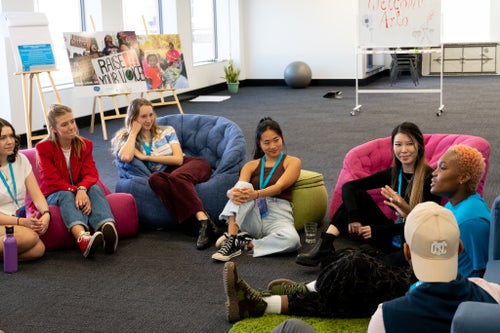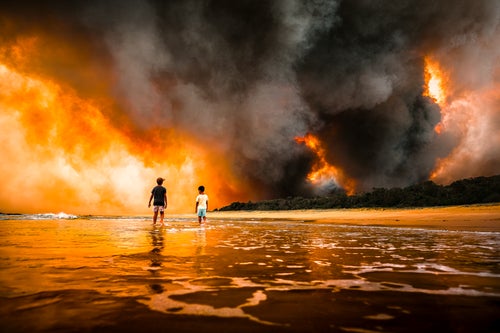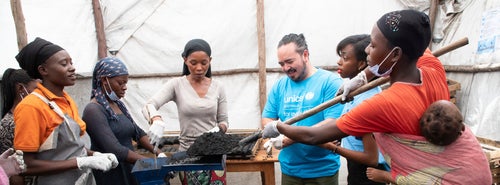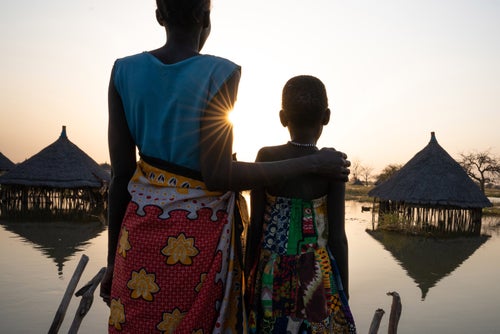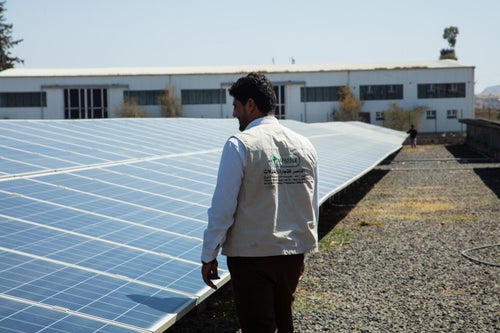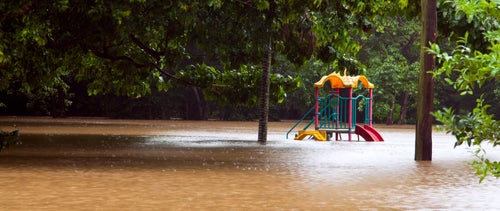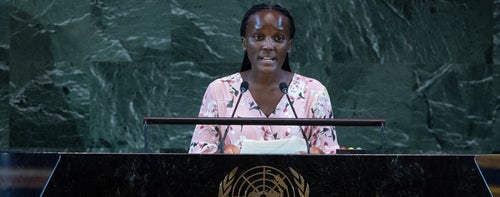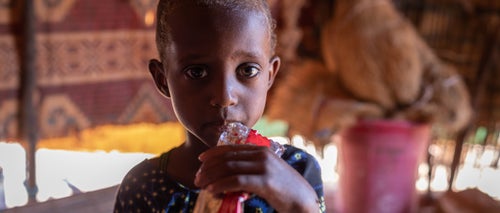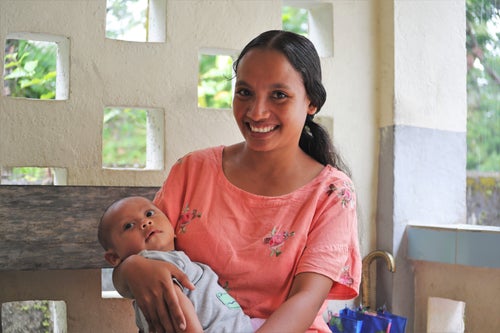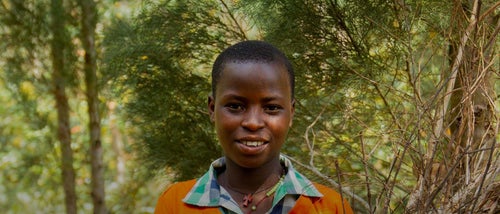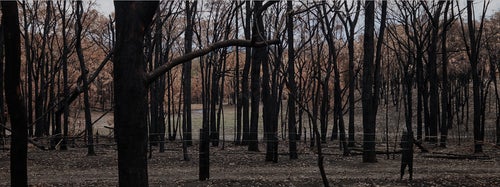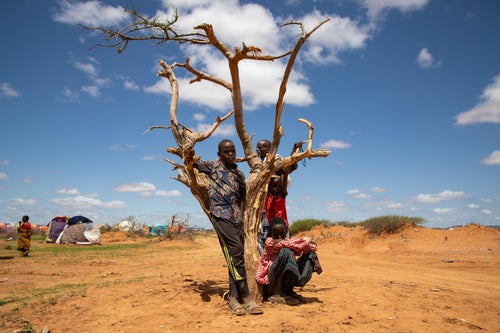A child today will experience 3x more climate disasters than their grandparents.
Ensuring that children inherit a liveable planet is just as vital as providing emergency relief when disasters strike.
Here in Australia and around the world, extreme weather is already reshaping childhoods. When bushfires rage, children lose their homes and communities. When floods hit, schools and health centres are destroyed. When droughts endure, access to food and safe water becomes dangerously limited.
The scientific evidence is clear: climate-related disasters are becoming more frequent, more intense, and longer lasting. Slow-onset changes – like rising temperatures and sea levels – are accelerating, putting children’s lives and futures at even greater risk.
1 in 3
Today, more than 1 in 3 children around the world are highly exposed to heatwaves.
1 in 7
Today, more than 1 in 7 children around the world are highly exposed to flooding.
Children are bearing the brunt of the crisis. Right now, more than 1 billion children – nearly half the world’s children – live in areas facing extremely high risk from climate change. Compared to adults, children are more vulnerable to climate and environmental shocks. They struggle to withstand extreme weather like floods, storms, and heatwaves, and face greater risks from diseases that are made worse by climate disasters, such as cholera, malaria, and dengue. Climate disasters disrupt children’s lives long after the event itself, leading to missed schooling, mental health challenges, family stress, and even increased risks of abuse.
Nowhere is safe from its effects: from cyclones in Vanuatu and bushfires in Australia to floods in Pakistan and droughts in Somalia. UNICEF is there for every child through emergency response, long-term programs, and youth-led advocacy to protect their future.
Protecting and empowering children in the face of climate change
UNICEF is empowering young people with the skills, platforms and opportunities they need to drive climate action and advocate for a more sustainable future.
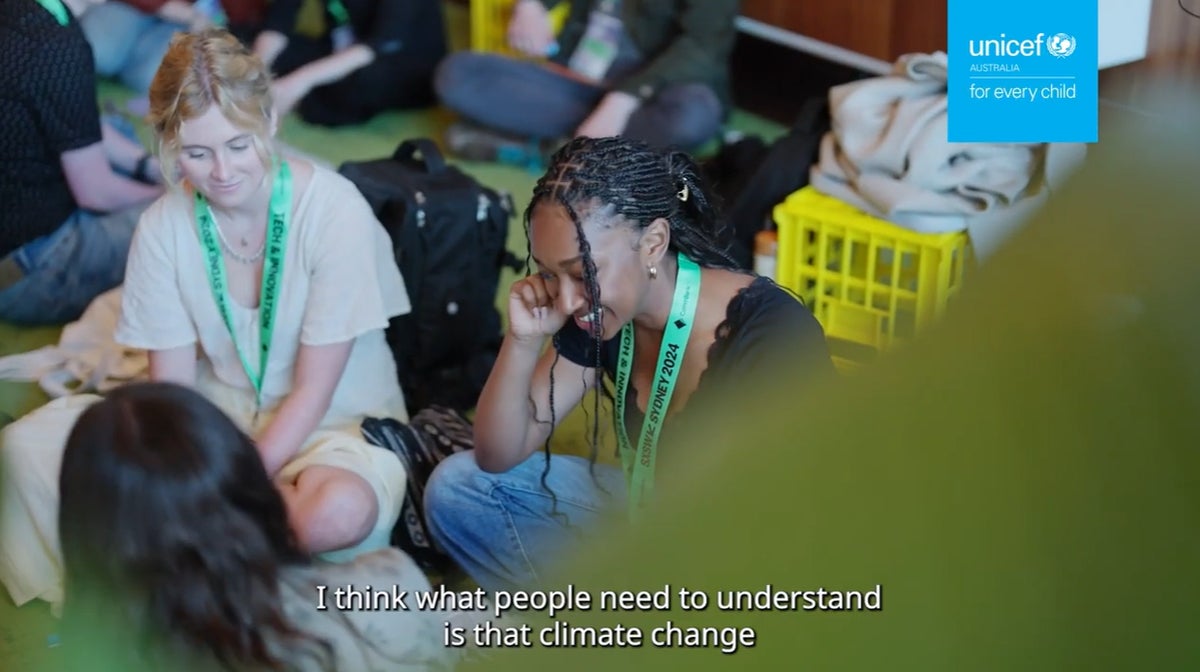
Why young people should be involved in climate action
From advocacy to action: How UNICEF Australia supports children and young people in the climate crisis
Young people are leading local and global advocacy efforts to increase climate action, inspiring many to join the cause. We must empower children and young people with education, skills and opportunities to lead climate action at this critical time in the climate crisis. UNICEF Australia is empowering young people to influence action through youth consultations and providing a platform for their voices to be heard by decision-makers. In 2025, alongside our partners, we supported young people with the largest number of climate consultations ever in Australia, taking young people’s views to climate decision makers and to the global stage at COP. Similarly, in Timor-Leste, Cambodia, and the Maldives we are supporting young people to develop leadership and advocacy skills, and enhancing access to decision-making platforms, providing them with meaningful opportunities to advocate for action on their most pressing issues, including climate change.
In the Philippines and Mongolia, UNICEF is helping young people build brighter futures through climate-resilient skills and green job opportunities. In disaster-prone regions of the Philippines, the Solar Generation Project equips youth from marginalised communities with technical training in solar energy and supports their innovation and entrepreneurship. In Mongolia, where climate threats and unemployment challenge rural youth, The Green Skills for Green Jobs program provides practical training in sustainable sectors like renewable energy and agriculture, with a strong focus on inclusion for girls and young people with disabilities. Together, these initiatives empower adolescents to lead change and thrive in a greener economy.
In Burundi and Papua New Guinea, we are supporting the use of innovative technologies for cooking to significantly improve the health of families by reducing air pollution in the home. Simple and innovative cooking technologies increase thermal efficiency, reduce wood consumption for fuel, minimise deforestation caused by firewood collection, and improve indoor air quality. This has the added benefit of reducing the amount of time spent by children – often girls – away from school collecting firewood, frequently in dangerous situations.
In Cambodia, Timor-Leste and Papua New Guinea, we are installing climate-resilient and sustainable water supply systems in health centres, schools and communities, supporting drought and disaster-prone areas to have continuous access to safe, clean water. This includes using technology for rainwater harvesting, solar water pumps and capacity building on conservation for community-based water resource management.
Our approach to addressing high levels of chronic malnutrition in Papua New Guinea is designed to support communities to become more resilient to the impacts of climate change on food systems. This includes establishing vegetable gardens in preschools and schools and enabling students to learn about how to protect the environment, while eating a nutrient-rich diet. Establishing improved sanitation and hygiene practices in schools and communities is keeping families healthy and their local environment clean.
UNICEF Australia’s consultations with children and young people after droughts, bushfires, and floods across Australia has repeatedly revealed that their needs and priorities are either invisible or misunderstood in disaster response, recovery, and preparedness. As climate disasters become more frequent and intense, we are working with governments and other stakeholders to create child-sensitive disaster frameworks across the country.
Learn about our recent research on climate
Inspiring action and the impact of our work
We're working to protect children in a changing climate.




